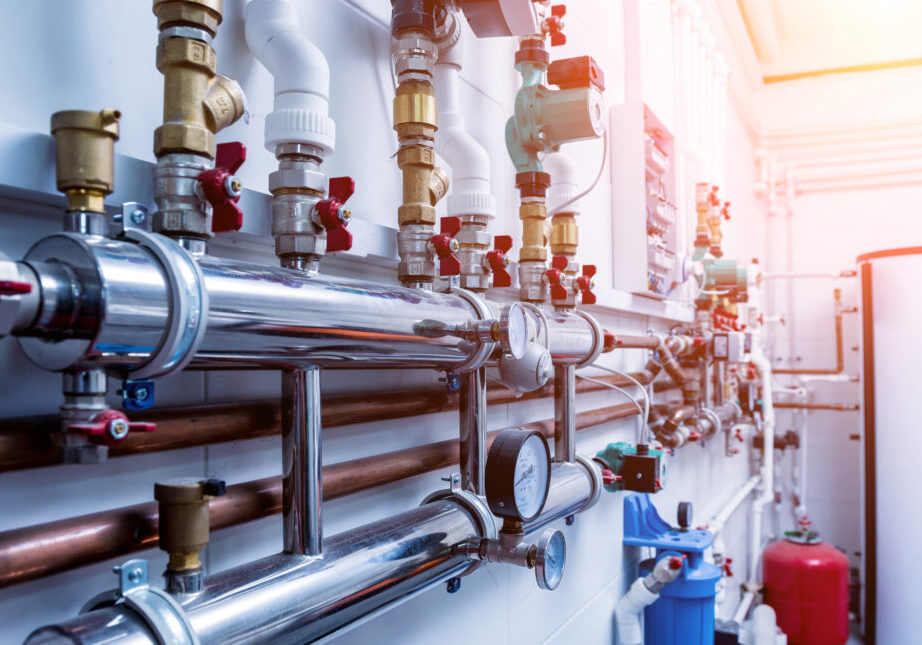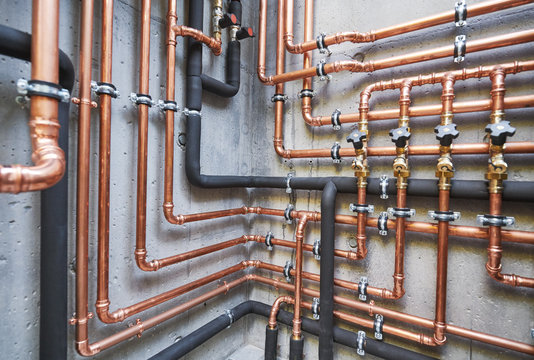The Anatomy of Your House's Plumbing System Explained
The Anatomy of Your House's Plumbing System Explained
Blog Article
Do you find yourself looking for ideas on Exploring Your Homes Plumbing Anatomy?

Comprehending how your home's plumbing system functions is essential for every homeowner. From delivering clean water for drinking, cooking, and bathing to securely getting rid of wastewater, a properly maintained pipes system is vital for your family members's wellness and convenience. In this detailed guide, we'll explore the intricate network that composes your home's plumbing and deal ideas on maintenance, upgrades, and dealing with common issues.
Intro
Your home's pipes system is greater than just a network of pipes; it's an intricate system that ensures you have accessibility to clean water and efficient wastewater elimination. Understanding its components and exactly how they work together can aid you avoid costly fixings and make sure everything runs efficiently.
Basic Parts of a Plumbing System
Pipelines and Tubing
At the heart of your pipes system are the pipes and tubes that carry water throughout your home. These can be made from various materials such as copper, PVC, or PEX, each with its benefits in regards to toughness and cost-effectiveness.
Fixtures: Sinks, Toilets, Showers, and so on.
Fixtures like sinks, bathrooms, showers, and tubs are where water is made use of in your home. Comprehending how these fixtures attach to the plumbing system aids in diagnosing issues and planning upgrades.
Valves and Shut-off Factors
Shutoffs control the circulation of water in your plumbing system. Shut-off valves are critical during emergency situations or when you require to make repair work, permitting you to separate parts of the system without interrupting water flow to the whole house.
Water Supply System
Key Water Line
The main water line connects your home to the local water supply or an exclusive well. It's where water enters your home and is distributed to different fixtures.
Water Meter and Pressure Regulator
The water meter actions your water usage, while a stress regulatory authority guarantees that water moves at a safe stress throughout your home's plumbing system, preventing damages to pipelines and fixtures.
Cold Water vs. Hot Water Lines
Recognizing the difference in between cold water lines, which provide water directly from the primary, and warm water lines, which bring warmed water from the hot water heater, aids in fixing and preparing for upgrades.
Drainage System
Drain Piping and Traps
Drain pipelines lug wastewater far from sinks, showers, and toilets to the drain or septic system. Catches prevent sewage system gases from entering your home and also trap debris that might trigger obstructions.
Air flow Pipes
Ventilation pipelines permit air right into the water drainage system, preventing suction that might reduce water drainage and cause traps to empty. Proper ventilation is necessary for maintaining the integrity of your plumbing system.
Significance of Appropriate Drain
Making sure correct drainage avoids backups and water damage. Frequently cleaning up drains and preserving catches can stop pricey fixings and expand the life of your pipes system.
Water Furnace
Sorts Of Water Heaters
Water heaters can be tankless or traditional tank-style. Tankless heaters heat water on demand, while containers save warmed water for prompt usage.
Just How Water Heaters Attach to the Pipes System
Understanding just how hot water heater connect to both the cold water supply and hot water distribution lines assists in detecting concerns like insufficient warm water or leaks.
Upkeep Tips for Water Heaters
Consistently purging your hot water heater to remove debris, examining the temperature settings, and inspecting for leakages can expand its life expectancy and improve energy performance.
Typical Plumbing Concerns
Leakages and Their Causes
Leaks can take place because of aging pipelines, loose fittings, or high water stress. Attending to leaks promptly protects against water damage and mold and mildew development.
Blockages and Clogs
Blockages in drains pipes and commodes are typically brought on by purging non-flushable products or a build-up of grease and hair. Making use of drain screens and bearing in mind what goes down your drains can stop obstructions.
Signs of Pipes Troubles to Watch For
Low tide pressure, slow-moving drains, foul odors, or uncommonly high water costs are signs of possible plumbing problems that need to be dealt with without delay.
Plumbing Maintenance Tips
Normal Inspections and Checks
Arrange yearly plumbing assessments to capture issues early. Search for indicators of leakages, deterioration, or mineral buildup in faucets and showerheads.
Do It Yourself Upkeep Tasks
Simple tasks like cleaning tap aerators, checking for bathroom leakages making use of color tablets, or protecting subjected pipes in cold climates can stop significant pipes issues.
When to Call a Professional Plumbing Technician
Know when a plumbing issue needs expert experience. Attempting complex repair work without appropriate knowledge can result in even more damages and higher repair work prices.
Updating Your Plumbing System
Factors for Updating
Updating to water-efficient fixtures or replacing old pipes can improve water high quality, minimize water costs, and increase the value of your home.
Modern Plumbing Technologies and Their Advantages
Explore innovations like wise leakage detectors, water-saving toilets, and energy-efficient water heaters that can save money and reduce ecological influence.
Expense Considerations and ROI
Compute the upfront costs versus long-lasting cost savings when thinking about plumbing upgrades. Several upgrades pay for themselves with decreased energy costs and fewer repair work.
Environmental Influence and Preservation
Water-Saving Components and Devices
Mounting low-flow taps, showerheads, and commodes can dramatically reduce water use without giving up efficiency.
Tips for Lowering Water Use
Straightforward habits like fixing leaks quickly, taking shorter showers, and running full lots of washing and recipes can preserve water and reduced your energy expenses.
Eco-Friendly Plumbing Options
Consider lasting pipes materials like bamboo for floor covering, which is durable and eco-friendly, or recycled glass for kitchen counters.
Emergency situation Readiness
Steps to Take During a Pipes Emergency situation
Know where your shut-off shutoffs are located and how to turn off the water in case of a ruptured pipe or major leak.
Importance of Having Emergency Situation Get In Touches With Useful
Keep call info for regional plumbings or emergency solutions easily available for fast reaction during a pipes dilemma.
DIY Emergency Situation Fixes (When Appropriate).
Short-term solutions like making use of duct tape to patch a dripping pipeline or placing a bucket under a leaking faucet can decrease damage up until a professional plumbing technician arrives.
Final thought.
Recognizing the anatomy of your home's plumbing system encourages you to maintain it successfully, conserving time and money on fixings. By adhering to regular maintenance regimens and staying notified concerning modern pipes technologies, you can guarantee your pipes system operates effectively for several years to come.
HOW YOUR PLUMBING SYSTEM WORKS
Which Pipes Do What?
Blue lines = fresh water supply entering the building
Red lines = hot water supply entering the building
Grey lines = pipes carrying waste away from the building and venting pipes carrying gases away from the building (through the roof)
YOUR MAIN PLUMBING SYSTEMS
There are two main plumbing systems that support your home s basic plumbing needs one that brings clean water into your home, and one that sends dirty water away from your home. Connected to the toilet, bath, shower, and other faucets in your home, these two systems keep your water flowing in the right directions.
ACCESSING FRESH WATER
Fresh and clean water is brought into your home through the main water supply line . Filtered through one pipe, this water is pressured to flow into the various fixtures in your home at any given time.
This water can be sourced from a well located on your property, a pond or river (mostly cottages), or, as in most cases, from the city s municipal water treatment centre. However, it is important to note that water that is untreated, such as the water siphoned from ponds or rivers, may not be safe to drink. Personal water supplies always need to be treated for hardness and contaminants before consumed.
MUNICIPAL WATER SUPPLIES
Improve taste and odour
Remove sediment
Eliminate hardness
Reduce chlorine
COLD WATER SUPPLY VS. HOT WATER SUPPLY
Cold water flows into your home or building through the service line, which then distributes hot or cold water to your fixtures. This line is most commonly run through a central column that runs floor to floor. Hot water runs in short and straight pipes as the longer the pipeline, the more heat that will be lost in the transfer. Having shorter pipes also allows residents to access hot water more quickly.
WASTE WATER SYSTEM
Your wastewater system is divided into two parts pipes that send wastewater away from your home and venting pipes that send sewer gas away from your home. Sewage water travels through pipes that flush the water and waste towards local sewers that are operated and managed by your city or town. Most sewer systems rely on gravity to move the wastewater to where it needs to go.
The further away from your toilet or sink, the larger wastewater pipes become. This allows for waste to be disposed of from various parts of your home or business at once without pipe blockages. The angle and flow of these pipes are also essential for keeping your waste pipes clear of build up.
https://harrisplumbing.ca/how-your-home-plumbing-system-works/

HOW YOUR PLUMBING SYSTEM WORKS
Which Pipes Do What?
YOUR MAIN PLUMBING SYSTEMS
There are two main plumbing systems that support your home s basic plumbing needs one that brings clean water into your home, and one that sends dirty water away from your home. Connected to the toilet, bath, shower, and other faucets in your home, these two systems keep your water flowing in the right directions.
ACCESSING FRESH WATER
Fresh and clean water is brought into your home through the main water supply line . Filtered through one pipe, this water is pressured to flow into the various fixtures in your home at any given time.
This water can be sourced from a well located on your property, a pond or river (mostly cottages), or, as in most cases, from the city s municipal water treatment centre. However, it is important to note that water that is untreated, such as the water siphoned from ponds or rivers, may not be safe to drink. Personal water supplies always need to be treated for hardness and contaminants before consumed.
MUNICIPAL WATER SUPPLIES
COLD WATER SUPPLY VS. HOT WATER SUPPLY
Cold water flows into your home or building through the service line, which then distributes hot or cold water to your fixtures. This line is most commonly run through a central column that runs floor to floor. Hot water runs in short and straight pipes as the longer the pipeline, the more heat that will be lost in the transfer. Having shorter pipes also allows residents to access hot water more quickly.
WASTE WATER SYSTEM
Your wastewater system is divided into two parts pipes that send wastewater away from your home and venting pipes that send sewer gas away from your home. Sewage water travels through pipes that flush the water and waste towards local sewers that are operated and managed by your city or town. Most sewer systems rely on gravity to move the wastewater to where it needs to go.
The further away from your toilet or sink, the larger wastewater pipes become. This allows for waste to be disposed of from various parts of your home or business at once without pipe blockages. The angle and flow of these pipes are also essential for keeping your waste pipes clear of build up.
https://harrisplumbing.ca/how-your-home-plumbing-system-works/
We were shown that report about The Inner Workings of Your Home's Plumbing from someone on a different blog. Loved our content? Please quickly share it. Let another person discover it. Thanks for being here. Don't forget to stop by our website back soon.
Click Here To Find Out More Report this page